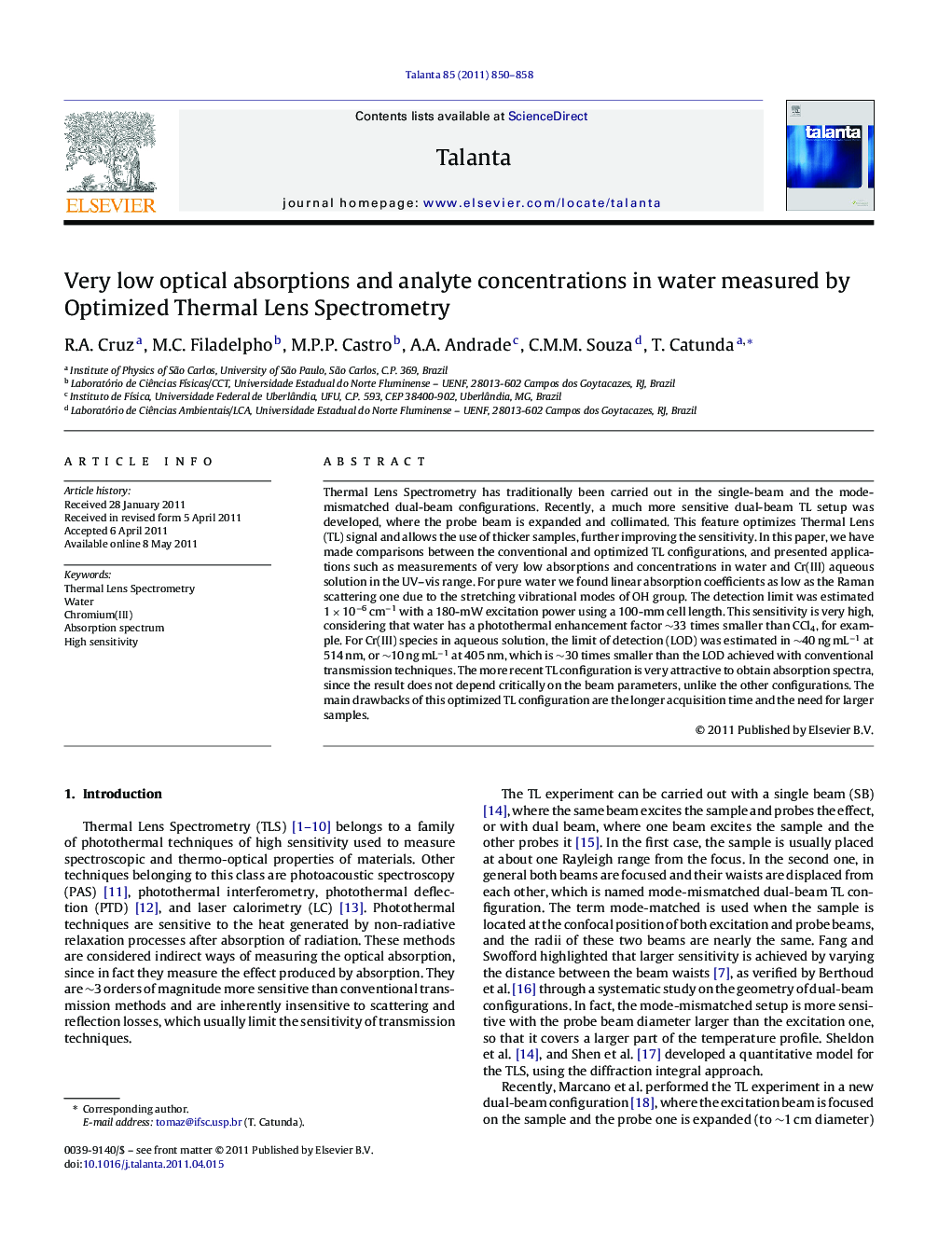| Article ID | Journal | Published Year | Pages | File Type |
|---|---|---|---|---|
| 1242347 | Talanta | 2011 | 9 Pages |
Thermal Lens Spectrometry has traditionally been carried out in the single-beam and the mode-mismatched dual-beam configurations. Recently, a much more sensitive dual-beam TL setup was developed, where the probe beam is expanded and collimated. This feature optimizes Thermal Lens (TL) signal and allows the use of thicker samples, further improving the sensitivity. In this paper, we have made comparisons between the conventional and optimized TL configurations, and presented applications such as measurements of very low absorptions and concentrations in water and Cr(III) aqueous solution in the UV–vis range. For pure water we found linear absorption coefficients as low as the Raman scattering one due to the stretching vibrational modes of OH group. The detection limit was estimated 1 × 10−6 cm−1 with a 180-mW excitation power using a 100-mm cell length. This sensitivity is very high, considering that water has a photothermal enhancement factor ∼33 times smaller than CCl4, for example. For Cr(III) species in aqueous solution, the limit of detection (LOD) was estimated in ∼40 ng mL−1 at 514 nm, or ∼10 ng mL−1 at 405 nm, which is ∼30 times smaller than the LOD achieved with conventional transmission techniques. The more recent TL configuration is very attractive to obtain absorption spectra, since the result does not depend critically on the beam parameters, unlike the other configurations. The main drawbacks of this optimized TL configuration are the longer acquisition time and the need for larger samples.
